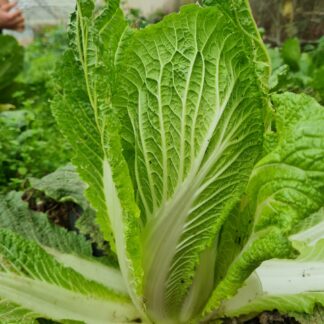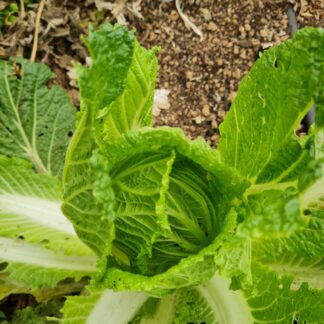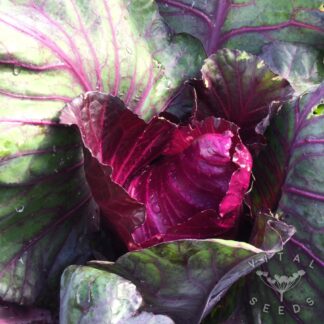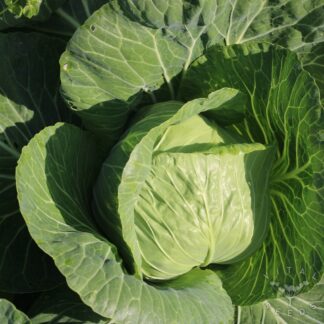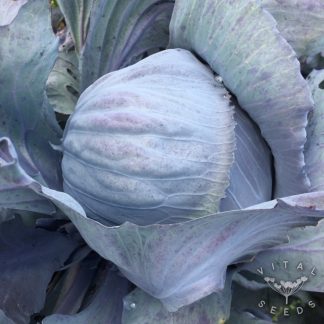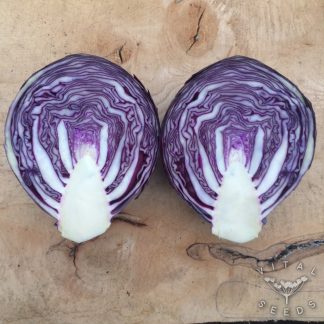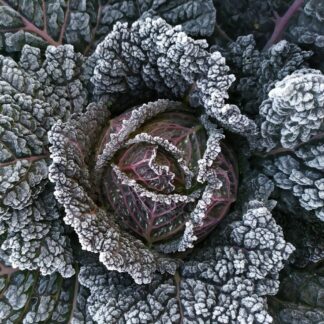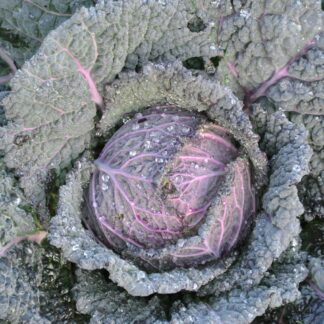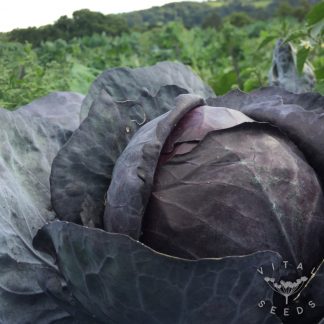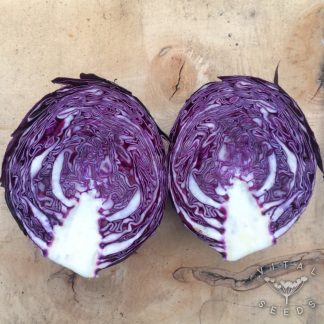Cabbage Seeds
How to grow cabbages
How to grow cabbages
Seed Sowing
There are many varieties of cabbage that can be sown at different times of the year. They are best grown in deep modules, then transplanted out later. Direct sowing is a good option later in the year as they do not like being transplanted during hot weather.
Transplanting
Transplant your seedlings into their final growing position, whether in full sun or part shade, at around 6 weeks after sowing. Make sure to keep the area weed-free and add plenty of organic matter before planting as cabbages are hungry plants. Spacing depends on the variety, it will be between 40-60cm x 50cm. When transplanting, firm them in well; they do like to be tucked in tight and protect them from frost if necessary.
Plant Care
Keep consistently watered; hot weather and dry conditions will encourage bolting. You can mulch with straw to help retain water and prevent weed growth. A cane support may be needed for taller plants in windier sites to avoid root rock. Once heads start to form water generously.
Challenges
Protect from slugs and snails, and use mesh to protect from pigeons and caterpillars. Copper collars can be used to keep away cabbage root fly. Clubroot is a disease affecting brassicas causing the roots to deform and plants to be stunted. If this is an issue, you can improve drainage and add lime to reduce infection, otherwise grow in pots.
Harvest
Harvest when the head is still compact and of good size. Take the heads from alternate plants, allowing space for the remaining ones to grow larger. Spring and summer cabbages can be cut almost to the ground, score the stem with a cross and it will produce another smaller head. Winter varieties can be left on the plant for longer and harvested when needed.
Culinary Ideas
Cabbage is a versatile year-round staple; it can be eaten cooked or raw, fermented, steamed, sautéed, braised, roasted, and stir-fried. Some classic recipes are bubble and squeak, coleslaw, and sauerkraut. Cabbage is a good source of vitamin A, C, B6, iron, magnesium, calcium, and fibre.
Seed Saving
Cabbages belong to the species brassica oleracea and will cross with all other varieties within this species if not isolated from other flowering plants. Choose at least twelve specimens that are true to type, healthy, and have shown disease resistance; avoid early bolters. Cabbage is a biennial seed crop and requires vernalisation, a period of cold that sparks the seed production process. Overwinter them either in storage or in a polytunnel or glasshouse. To allow the plants to flower, you may have to cut the head off in early winter or cut a cross into the head in early spring for the stalks to come out. Let the flowers get pollinated, and when the green seed pods begin to turn brown and the seeds inside black, cut the stem and leave to mature further on a sheet indoors. When fully dry, the seeds will easily fall out of their pods. You can stomp or stand on the material, then sieve to remove the chaff.
Showing all 6 results
-


Napa Cabbage – Jeju Island (Organic) ***NEW FOR 2026***
£2.60 Add to basketNapa Cabbage – Jeju Island (Organic) ***NEW FOR 2026***
Originally from Jeju island, perfect for making kimchi or adding to stews and soups. The seeds of this line came from a farmer from Jeju Island, the volcanic island on the Southern part of Korea. This is a heritage Chinese cabbage variety, also called “Gueok” or “Gueokbeachu”. The plants grow well in our climate, making compact, slightly elongated heads with a cream coloured heart reaching up to 2kg. The flavour is mild yet typical Chinese cabbage with a twist of Indian mustard. It’s traditionally used to make kimchi as well as other Korean dishes such as Gochujang (cabbage soup) or Ssam (cabbage wrap).
(Approximate seed count – 80) £2.60
£2.60 -


Cabbage – Kalibos (Organic)
£2.70 Add to basketCabbage – Kalibos (Organic)
A heritage variety from Eastern Europe producing pink/purple pointed heads of roughly 2kg. This beautiful variety is a traditional rare variety from Eastern Europe. It is deliciously sweet and is perfectly suited to shredding into salads and fermenting into saurkraut.
(Approximate seed count – 100) £2.70
£2.70 -


Cabbage – Derby Day (Organic)
£2.90 Add to basketCabbage – Derby Day (Organic)
Early summer cabbage that quickly forms large round heads. This is our favourite summer cabbage. An excellent variety for cropping as early as June. It is more resistant to splitting and bolting than some other fast-growing varieties. It has a dense interior of mild flavour that is ideal for steaming, boiling or in used in a coleslaw.
(Approximate seed count – 100) £2.90
£2.90 -


Cabbage – Langedijk Red (Organic)
£2.60 Add to basketCabbage – Langedijk Red (Organic)
Forms dense heads of a good size which stand well in the field and also do well in storage. This improved variety is particularly suited for storage and has good taste. It also makes a very fine sauerkraut, turning bright pink during the fermentation with the addition of salt. Red cabbage can be used as a litmus test for acidity turning blue in more alkaline conditions.
Guest description by our friend Dan from Chagfood CSA!
(Approximate seed count – 100) £2.60
£2.60 -


Cabbage, Winter – Verza Moretta (Organic)
£3.50 Add to basketCabbage, Winter – Verza Moretta (Organic)
Fantastic traditional ‘Veronese’ purple Savoy cabbage with bright green centre. This striking variety has been cultivated in the countryside around the Adige river in Italy since the nineteenth century and is on the official list of traditional rare varieties.
It has purple and green outer leaves and bright green-yellow centres. Forms a compact head with a sweet flavour, perfectly suited to salads, soups, and risottos. (Approximate seed count – 50)
 £3.50
£3.50 -


Cabbage – Rodynda (Organic)
£3.00 Read moreCabbage – Rodynda (Organic)
Red autumn and winter cabbage with a dense head and medium-good storage qualities. Rodynda is a variety bred specifically for organic conditions. It is vigourous and short-stemmed and forms dense, elliptical heads. It has strong outer leaves and solid root growth. The particularly sweet and aromatic flavour makes it perfect for a coleslaw and it performs brilliantly in a classic braised red cabbage dish cooked with apples and onions.
(Approximate seed count – 100) £3.00
£3.00
Showing all 6 results
